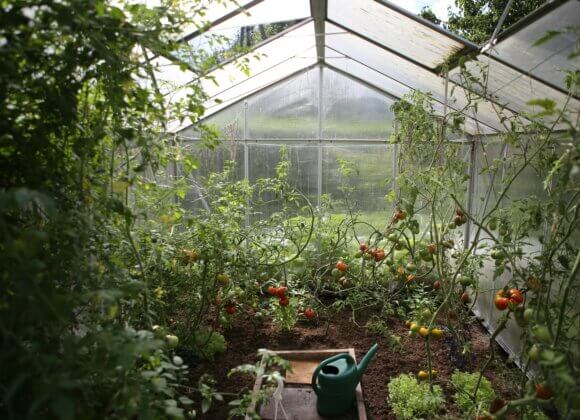More and more hobby gardeners are discovering the advantages of greenhouses. While some plants, such as tomatoes, appreciate a roof over their heads in summer, others are grateful for the light and cool winter quarters.
Harvesting the first vegetables early in the spring and extending the harvest well into the fall is the dream of many a hobby gardener. Others, on the other hand, are tired of having to do without sensitive plants for lack of a winter home. The solution for both is greenhouses, which are therefore increasingly to be found in domestic gardens.
“Overwintering plants in a greenhouse is a very typical form of use,” says Stefan Straif, one of the managing directors of the Eferding-based greenhouse manufacturer GFP. Because even a little sun is enough for plus degrees, possibly supplemented by a terracotta pot heater. To do this, a candle is placed under a clay pot, which heats up and releases the heat into the environment. However, gas or electric fan heaters can also be installed for safety reasons.
What protects lemons, oleanders and other plants in winter also benefits vegetable plants in spring. Spinach can be sown in an unheated greenhouse as early as February, followed by lettuce, kohlrabi and radishes. In May, switch to heat-loving crops such as cucumbers, peppers or tomatoes. The latter in particular appreciate being protected from wind and rain and thank us with a rich harvest. In the fall, on the other hand, spinach, garden cress, rocket and other fall and winter vegetables return.
Glass or greenhouse?
In principle, greenhouses are available in real glass, polycarbonate and occasionally also in PVC film. “That’s why we tend to talk about greenhouses,” says Straif. Real glass is the material of choice in England and France in particular, while polycarbonate sheets are preferred in Austria and films in the USA. “Glass is more visually appealing and is easy to clean. But unlike polycarbonate, it is more susceptible to breakage, heats up more quickly and cools down just as quickly,” explains Straif.
Polycarbonate, on the other hand, can store heat better due to the air chambers between the layers. “However, verdigris forms in the hollow chamber, which you have to remove with a brush or bottle cleaner, for example,” says Straif.
The purpose determines the amount
In order to find the perfect greenhouse, the purpose should be clarified first. Is it used to house small plants or rather taller plants? “This is crucial for the height,” says Straif. In this context, he recommends a height of at least 1.80 to 1.90 meters, as the type of use may well change over the years. For example, because small plants once grew. Once you have defined the height, it is a question of size, which is determined not only by the purpose but also by the space available in the garden.
Built on a foundation
Before the greenhouse is erected, the foundations must be laid. “They offer the wind a relatively large surface area to attack,” says Straif. Ground anchors, aluminum or concrete foundations or even foundations made of bricks or stones can be used as foundations.
The expert also advises asking the local authority whether a permit is required before erecting the glass house. But you should also consider something else – namely the availability of water and electricity connections. Last but not least, you should find out about the snow load that the structure can bear.
The best place for a greenhouse
To avoid overheating, the ideal location is in partial shade. As every ray of sunshine and every incidence of light counts in winter, the long side of the greenhouse should face east-west. Windows in the wall or ceiling help to dissipate excess heat to the outside during the warmer months. If you don’t always want to open them manually, you can use an automatic roof ventilator that opens the windows when a pre-set temperature is reached. It also makes sense to install sun protection.

How much does a greenhouse cost?
The cost of a greenhouse depends on the material, design, size of the plant quarters and the provider. Film greenhouses are available from just under 200 euros, while polycarbonate sheet greenhouses start at around 300 euros.
You have to dig deeper into your pockets for greenhouses made of real glass, starting at around 600 to 700 euros. “There is no upper limit,” says Straif. In addition to the purchase price, there are the costs for the foundation, the greenhouse equipment and possibly for the assembly of the good piece.
All photos: GFP
Related posts:
Outdoor trends 2024: A new attitude to life in the open air








![Home cooking reloaded incl. competition Christoph_Krauli_Held©Monika_Loeff_19285[1]](https://myhome.at/wp-content/uploads/2025/09/Christoph_Krauli_Held©Monika_Loeff_192851-580x420.jpg)




